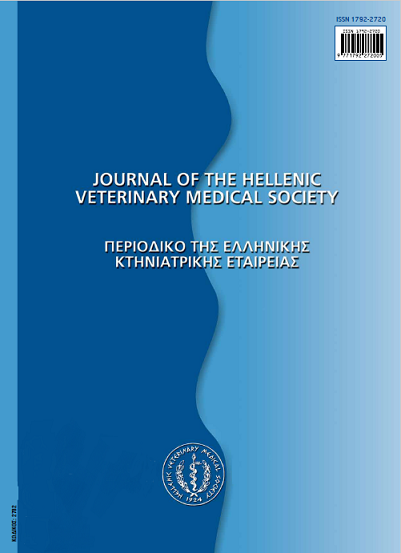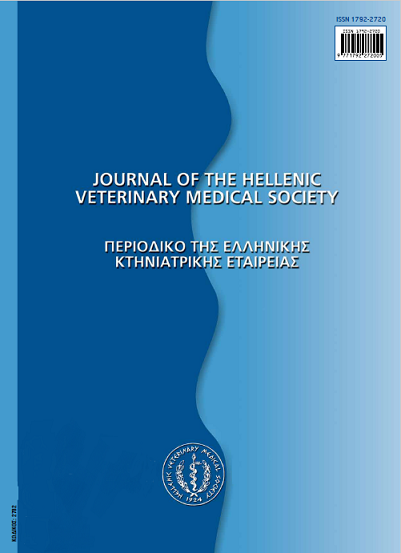Στρεπτοκοκκικές λοιμώξεις στα εκτρεφόμενα ψάρια

Περίληψη
To γένος Streptococcus περιέχει ένα μεγάλο αριθμό Gram θετικών βακτηρίων. Μόνον μερικοί βιότυποι έχουν απομονωθεί στα ψάρια και τα πιο παθογόνα είδη ανήκουν στην ομάδα με ορότυπο D που είναι γνωστά ως Enterococci. Σηψαιμία από τα βακτήρια αυτά για πρώτη φορά αναφέρθηκε στην ιριδίζουσα πέστροφα (Onchorynchus mykiss) στην Ιαπωνία το 1958. Από τότε η ασθένεια εμφανίζεται σποραδικά σε εκτρεφόμενα ή άγρια ψάρια τόσο γλυκού όσο και θαλασσινού νερού σε όλον τον κόσμο. Τα είδη Enterococcus sp. προκαλούν σημαντικές οικονομικές επιπτώσεις, ειδικά στα θαλάσσια είδη. Από τα ψάρια γλυκού νερού η πέστροφα (Onchorynchus mykiss) και η Τιλάπια (Oreochromis niloticus) είναι τα πιο σημαντικά είδη ψαριών που προσβάλλονται. Τα κλινικά συμπτώματα διαφέρουν αναλόγως μετα προσβεβλημένα είδη ψαριών. Τα πιο συχνά συμπτώματα είναι ανορεξία, ανωμαλίες κολύμβησης, σκούρος χρωματισμός, οφθαλμικές
αλλοιώσεις, εξωτερικές αιμορραγικές αλλοιώσεις και εξελκώσεις.Το σύστημα ταυτοποίησης βασίζεται στην αναγονικότητα του κυτταρικού τοιχώματος και γίνεται με βάση το σύστημα του Lancefìeld, όπου τα βακτήρια διακρίνονται σε Enterococcus ή Enterococcus Aike streptococci με βάση χαρακτηριστικά, όπως η αιμόλυση και τα βιοχημικά χαρακτηριστικά. Με βάση αυτά τα κριτήρια μερικά στελέχη έχουν χαρακτηριστεί ως ταυτόσημα. Έχει βρεθεί ότι τα στελέχη από ψάρια γλυκού νερού στην Αμερική ανήκουν στην ομάδα Β (Lancefield's group Β), ενώ ερευνητές στην Ιαπωνία, αφού ανέλυσαν πολυάριθμα στελέχη από ψάρια του είδους Seriola sp. από θαλασσοκαλλιέργειες, αλλά και από χέλια, με βάση τη μέθοδο του υβριδισμού κατέληξαν στο συμπέρασμα ότι τα βακτήρια είναι πιο κοντά στο γένος Enterococcus και ότι η νόσος στη νΙαπωνία στα θαλασσινά ψάρια θα πρέπει να ονομάζετα ι"Enterococcal infection". Δεξαμενή για τη μετάδοση της νόσου είναι τα βακτήρια που αποβάλλονται από τα ασθενή ψάρια. Τα βακτήρια αυτά παραμένουν στην ιλυ γύρω από τις εκτροφές για μεγάλο χρονικό διάστημα. Μεγαλύτερος αριθμός βακτηρίων υπάρχει στο θαλασσινό νερό το καλοκαίρι, ενώ τους χειμερινούς μήνεςαυτός είναι μεγαλύτερος στην ιλυ του πυθμένα. (Kitao et al. 1979).Σε ψάρια γλυκού νερού έχει βρεθεί ότι η νόσος έχει σχέση με το οργανικό φορτίο και τη μόλυνση σε ποταμούς που τροφοδοτούν εκτροφές και ειδικά σε θερμοκρασίες 21-22°C (Ghittino & Praero1992). Τα άγρια ψάρια μπορούν, επίσης, να μεταδώσουν τη νόσο. Πιστεύεται όχι η μετάδοση είναι άμεση από μολυσμένα ψάρια και τροφή. Οι μηχανισμοί της παθογένειας της νόσου δεν είναι πλήρω ςκατανοητοί.
Λεπτομέρειες άρθρου
- Πώς να δημιουργήσετε Αναφορές
-
ATHANASSOPOULOU (Φ. ΑΘΑΝΑΣΟΠΟΥΛΟΥ) F., & ROBERTS, R. J. (2017). Στρεπτοκοκκικές λοιμώξεις στα εκτρεφόμενα ψάρια. Περιοδικό της Ελληνικής Κτηνιατρικής Εταιρείας, 55(2), 136–144. https://doi.org/10.12681/jhvms.15174
- Τεύχος
- Τόμ. 55 Αρ. 2 (2004)
- Ενότητα
- Review Articles
Οι συγγραφείς των άρθρων που δημοσιεύονται στο περιοδικό διατηρούν τα δικαιώματα πνευματικής ιδιοκτησίας επί των άρθρων τους, δίνοντας στο περιοδικό το δικαίωμα της πρώτης δημοσίευσης.
Άρθρα που δημοσιεύονται στο περιοδικό διατίθενται με άδεια Creative Commons 4.0 Non Commercial και σύμφωνα με την άδεια μπορούν να χρησιμοποιούνται ελεύθερα, με αναφορά στο/στη συγγραφέα και στην πρώτη δημοσίευση για μη κερδοσκοπικούς σκοπούς.
Οι συγγραφείς μπορούν να καταθέσουν το άρθρο σε ιδρυματικό ή άλλο αποθετήριο ή/και να το δημοσιεύσουν σε άλλη έκδοση, με υποχρεωτική την αναφορά πρώτης δημοσίευσης στο J Hellenic Vet Med Soc
Οι συγγραφείς ενθαρρύνονται να καταθέσουν σε αποθετήριο ή να δημοσιεύσουν την εργασία τους στο διαδίκτυο πριν ή κατά τη διαδικασία υποβολής και αξιολόγησής της.









